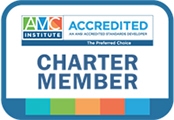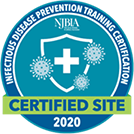Program-driven Planning for Large Virtual Events

The American Transplant Congress redesigned its 2020 in-person event for a virtual experience that made the most of digital event platforms
Like most associations, the American Transplant Congress (ATC) knew early on in the COVID-19 pandemic that it would need to launch its 2020 event as a virtual event. However, ATC’s event-planning team wanted the event to be much more than just an online version of the in-person event—they wanted the virtual event to be an experience that made the most of the platform. To accomplish this feat, ATC’s meeting team worked strategically with the Program Planning Committee to determine what kind of virtual platform would be ideal to showcase the work in transplantation throughout the year. Ultimately, ATC found itself redesigning the in-person program to make the most of the virtual event.
“Redesigning the program allowed the ATC team to navigate how to position the virtual technology platform for utilization,” said Shannan Fagan, CMP, ATC’s director of meetings and exhibitions. “The ATC team also worked with the leadership of the American Society of Transplant Surgeons and the American Society of Transplantation to determine the best options to showcase the amazing advancements in transplantation science over the past year.”
Moving the in-person Congress to a virtual event was not an easy task, especially when considering what attendees, speakers, and sponsors had grown to expect from the in-person event. To address this, Fagan and her team considered what each type of participant may want in a virtual event.
“A lot of education is needed for each type of participant and how they manage the virtual space,” Fagan said. “Each participant interacts with the virtual technology differently based on their role, so we developed specialized education and promotion for the various roles. The ATC team also became extremely well-versed in all aspects of the participants’ technology use in a very short amount of time.”
Incorporating Awards
One much-anticipated event at ATC is its People’s Choice Award program. This program engages ATC attendees to provide feedback on plenary abstract sessions and vote for the most impactful science at the meeting. Incorporating the program into the virtual ATC was critical.
“The program was instituted the year prior during the 2019 in-person Congress,” Fagan said. “Translating this into the virtual space allowed remote attendees to vote on the most impactful science and continue the success of the Award.” The ATC team leveraged the virtual platform to encourage participation and voting.
Post-Event Access
On-demand access not only allows participants to see sessions they may have missed during the live event, but allows those who missed the live event altogether to access the valuable educational content when and where it’s most convenient for them. ATC participants have access to the recorded sessions for on-demand viewing for one year.
“We felt that a full year to access content provided more benefits to participants,” Fagan said. “It’s an innovative approach to extending the life of content. Other virtual events allowed attendees to access content for a short amount of time. The full year of access makes ATC stand out. In addition to this, the virtual ATC offered three times the amount of education credits normally available at the in-person event.”
During the live broadcast of the virtual ATC, more than 3,750 participants from 57 countries logged in to watch. Since then, there has been a 27% increase in views from those continuing to visit the virtual portal to view recorded live sessions, sponsor information, abstract information, and to claim education credits, bringing the total number of views since the portal opened to more than 80,500. The number is expected to increase throughout the year the portal is available.
Tips for Association Event Planners
With so many options for virtual events, event planners may be overwhelmed with where to start. Fagan leaves some parting advice for those looking to take the first steps in planning a virtual event.
“Examine your program first to determine what will translate to a virtual space versus in-person,” Fagan said. “This will also help you determine what capabilities and production you will need from your technology platform and virtual production team.”
Get FREE in-depth guidance for planning a virtual event by downloading Virtual Events 2.0: A next-generation guide for association meeting and event planners.



